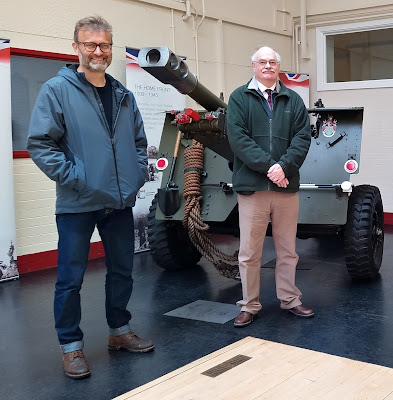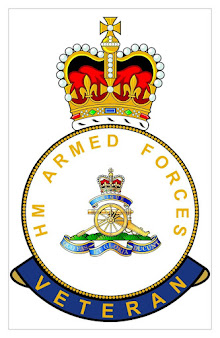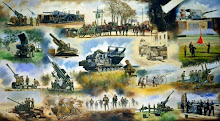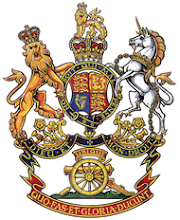 |
| Hugh Dennis IJ |
On 10th March 2021, the TV programme the Great British Dig featured Trow Point , South Shields. Hosted by Comedian and actor Hugh Dennis, his team of archaeologists aimed to uncover the military history of Trow Point.  |
Hugh Dennis and his team archaeologists Trow Point
Richard Hugh Chloe Natasha |
To assist Hugh and his team of archaeologists was my good self providing local knowledge and Regimental history expertise.
 |
| IJ Trow Point Great British Dig |
To understand the military aspects of their findings, the team enlisted the help of 101 Regiment Royal Artillery, South Shields based 205 Battery and Veterans from the Royal Artillery Association.
 |
| Hugh Dennis IJ CO 101 RA BC 205 Battery |
 |
| 3 DVA Association RAA with archaeologist Don |
On top of Trow Point is the replica of a disappearing gun, the original of which was installed in 1877. The War Office used the location to conduct trials for a disappearing gun manufactured by Clarke-Maxim gun. The mechanism proved unsuccessful and the gun removed in 1894, leaving the concrete emplacement. A replica gun was mounted in the 1990s
 |
| Trow Point Disappearing Gun |
The primary focus of the archaeologists was the military history of Trow Point which could be traced from Victorian times through both World Wars. Of particular Northumbrian Gunner interest were the activities of the 3rd Durham Volunteer Artillery (3DVA). In 1864 the 3 DVA established a practice Battery on Trow Point.
A photograph from the 1890's shows Trow Point with a magazine, a house for Permanent Staff Instructors (PSI) and cannon of the practice battery.
 |
Trow Point 1890s
Magazine PSI House Cannons |
Photographs of the Battery firing from Trow Point show cannons mounted on wooden firing platforms consistent with the location of the two concrete platforms identified during the initial research.
 |
| 3 DVA gun practice Trow Point c1890 |
There were however thoughts the concrete platforms could be searchlight emplacements from a later period. The archaeologists set to work to discover what lay beneath the soil.
Once uncovered, the concrete bases were found to be gun platforms, not from the 32 pounder smooth bore cannon days, but that of a type used by Rifle Muzzle Loaders (RML) coastal artillery introduced towards the end of the 19th Century.
 |
| Gun platform Trow Point |
A review of the history of the Third Durham Volunteer Artillery shows that the 3 DVA were equipped with the 64 pounder Riffle Muzzle Loader in the late 1890’s. Confirmation that the archaeology could be supported by the history.
 |
| RA veterans identifying gun platform |
 |
| 64 pounder Rifle Muzzle Loader |
Another excavation was made to confirm the extent and usage of a house that was identified as being used by Permanent Staff Instructors (PSI) attached to the 3 DVA. It was also used as a caretakers house for a nearby quarry at a later date.
 |
| Trow Point house excavation |
Located on the cliff edge overlooking Sandhaven Beach, a potential trench system was identified. Excavation revealed traces of corrugated iron and stakes, indicating a fire trench, confirmed when examination of the ground revealed a zig zag communication trench.
 |
| Potential trench system excavation |
 |
Potential trench system excavation
|
At the end of the weeks exploration it was back to Dig HQ for Hugh Dennis and the archaeologists to outline their findings.
 |
| Dig HQ Hugh Dennis and Richard |
 |
| Dig HQ Jim IJ Andy |
 |
| IJ on the TV - Sherlock views with interest |















































